
| Palaeos |  |
The Great Chain of Being |
| Systematics | The Great Chain of Being |
| Page Back | Unit Home | Systematics Glossary | Page Next |
| Unit Back: Systematics | Unit Up: Systematics | Systematics References | Unit Next: Linnaean taxonomy |
The concept of the "Great Chain of Being" begins with a marriage of Plato's Idea of the Good who is bound by its own principle of plenitude to generate every possible Idea and temporal being, and Aristotle's Scala Naturae (Ladder of Nature). Later, Plotinus, one of the greatest systematisers and mystics of late Antiquity, integrated Platonic, Aristotlean, and Stoic philosophy, developing a panentheistic metaphysic in which behind the material universe are a series of transcendental realities, called hypostases, as follows:
Following Plato rather than Aristotle, these higher principles were considered distinct metaphysical realities that were the archetypes of the natural world. Each higher higher hypostasis gives rise by a process of emanation to the next, with the lowest one generating the material world. There, "beneath" (although not in any spatial sense) the three hypostases, at the maximum point of emanation, is the world of the senses, the material world of pure quantity (hyle), with nature (physis) sometimes as an intermediate principle between the world soul and matter. Later neoplatonists such as Iamblichus and Proclus built on Plotinus' scheme, adding ever more hypostases and replacing the mystical immediacy of the One with a series of progressively transcendent strata.
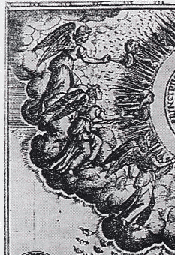 |
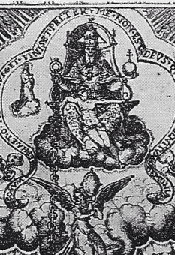 |
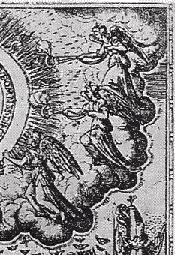 |
 |
 |
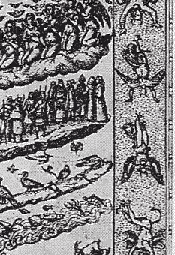 |
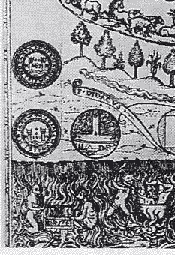 |
 |
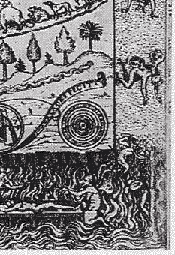 |
With the fall of classic learning the last formulation of pagan metaphysics was lost, and the middle ages reverted to the more classic Platonic and Aristotlean approach, via Augustine and Aquinus. But at the same time, later neoplatonism, especially as propounded by Proclus, the last of the great Neoplatonic synthesisers, was to have a strong influence on both Christian and Islamic medieval metaphysics (via Pseudo-dyonsius and Avicenna respectively). Plotinus himself became one of the major metaphysical sources of Islamic philosophy, via the pseudepigraphical "fourth book" of Aristotle. The elaborate cosmology and theology of mystical Judaism (Kabbalah) was if anything even more strongly influenbced by neoplatonic ideas of emanation.
For the most part though, in the middle ages, the highly metaphysical Neoplatonic concept of emanation and hypostases became God and the hierarchies of angels and archangels bridging the divide between Fisrt Principle and the human world. At the same time, beneath man was the hierarchy of nature as described by Aristotle. Between these two was the feudal system, showing how secular and religious social strata fit into the larger divinely ordained pattern. As a result, during the medieval period The Great Chain of Being represented a visual metaphor for a divinely inspired universal hierarchy ranking all forms of higher and lower life. At the top is God, immediately underneath are His angels, then Kings and Queens (or Pope if one is Catholic), and the whole feudal social stratified sequence of Archbishops, Dukes and Duchesses, Bishops, and so on, down through the ranks of greater and lesser nobles, to commoners and tradesmen, servants, tennant farmers, beggars, pirates, thieves (and actors and gypsies who were likewise placed near or at the bottom) then the various kinds of animals, birds, reptiles, insects, worms, plants, minerals, and rocks. (Links: The Great Chain of Being; There were three general roles in society, called the Three Estates.). Drawing from both the Aristotlean and the Biblical (including the modern creationist) understanding of the world (which were synthesised in the theology of Aquinus), the great chain of being presented an essentialist worldview of immutable species, and, in Feudal societry, social strata.
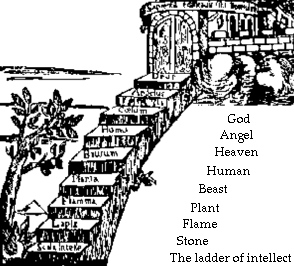 The Great Chain of Being - image from Shakespeare's Life and Times |
The idea of the Great Chain of Being was similarily very important during the Renaissance and remained a central element in the Elizabethan understanding of the world as evident in Shakespeare's plays. Shakespeare believed in the Divine Order, the belief that everything in the universe has a specific place and rank due to its importance and spiritual nature. To break the chain of being would upset the established order and bring about universal disorder. Thus when Julius Caesar is assassinated, there is chaos in the heavens as well as on earth. In Macbeth after Duncan is murdered there are frightening omens (Act 2, Scene 4), and only when Malcolm, the rightful king, gains the throne at the culmination of the play is order and harmony to the world restored. ref. Macbeth, Taming of the Shrew, Romeo and Juliet, and Hamlet are just a few of the plays that reflect Shakespeare's belief in the Great Chain of Being and his desire to maintain God's Order. ref
During the secular enlightenment of the 17th and 18th century Europe and North America, there was an understanding of the universe as the highest good, complete and full, in which every species of being has its perfect place. Lovejoy refers to this belief as "the Principle of Plenitude". It was believed that no species can ever become extinct, as to do so would result in a gap in God's creation. Understanding this harmonious linear order of nature as a product of God's benign creative activity was a meaningful pursuit.
By the late 18th century, the idea of progress that accompanied the enlightenment led to the "temporalization of the great chain of being" . There was still a single linear scale, a ladder of nature, but it was now a progressive, evolutionary one, in which ascent rather than neoplatonic style descent (emanantion) was the rule. In the late 18th to mid 19th century these themes were developed in the form of German Idealism and Naturphilosophie, and in the mid 19th to early 20th century ideas, with the success, popularisation, and misinterpretation of Darwinian and other evolutionary theories, in sociological evolution, social darwinism, spiritialism and theosophy.
A good example in the popular imagination of the temporalization of the great chain of being is Rudolph Zallinger iconic (and universally misinterpreted) 1960s image of the "Ascent of Man". The ubiquity of this iconic graphic shows the power of the meme of progress as the ascending great chain of being
In the late 20th century, a non-evolutionist revival of a neoplatonic style Great Chain of Being, via neo-Sufi Traditionalism, has been presented as an example of the "Perennial Philosophy" (note that this is quite different from the more classically pantheistic or monistic Hindu Vedantic "Perennial Philosophy" taught by Swami Vivekananda, and popularised in a book of teh same name by the novelist Aldous Huxley), by the scholar of comparative religion Professor Huston Smith (formerly of Syracuse University, N.Y.), who (in his books Forgotten Truth and Beyond the Post-Modern Mind) refers to four levels of physical, intermediate/mental, celestial/soul, and spirit/infinite (the last of these inspired by vedantic monism). These clearly have their roots in Plotinus' hypostases. E.F. Schumacher (author of Small is Beautiful) in Chapter 2 of "Guide for the Perplexed" 1977 similarily revived Aristotle's three types of soul (vegetative, a sensitive, and a rational) with together with mineral or inanimate matter made four categories, as another example of the same "Perennial Philosophy". This is also similar to Linnaeus' 18th century great chain of being based three kingdoms but with man as the rational soul anthropocentrically added as a separate kingdom (which is in keeping with the religious idfea of a "special creation" for man).
Finally the creationistr/intelligent design Neo-Sufi, Neo-Platonic, and Aristotlean "Perennial Philosophy", the pantheistic Neo-Hindu (Vivekananda and Aldous Huxley) monism, the evolution of consciousness and temporalised great chain of being "ascent of man" memes, and many other elements (especially Theosophy, popularist Eastern Gurus, and the Human Potential Movement), all converged in the late 20th (1970s onwards) and turn of the 21st century to become the New Age, New Paradigm, Transpersonal Psychology, New Consciousness, and Integral Theory cluster of ideas. As popular metaphysics and religion therefore the confluence of two aspects of the "Great Chain of Being", the descending/emanationist/involutionary and the acending/temporalised/evolutionary remain an influential 21st century meme and an alternative to literalist religion. As non-empirically verifiable it can neither be affirmed nor denied by science, although it can be tied in with themes regarding the evolutionary tramscendence of consciousness (which need not be inconsistent with science or even materialism, consider for example the transhumanist movement). Science itself meanwhile has ever since the 18th and 19th centuries gone its own way, replacing the ladder of nature with the evolutionary tree of life on Earth. MAK130328
| Page Back | Unit Home | Page Top | Page Next |